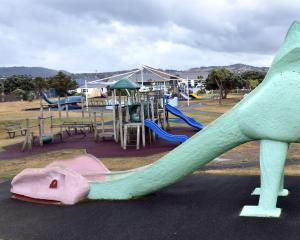The answer is blowing in the wind for University of Otago researcher Mike Hilton.
He is taking a close interest in the foredune protecting Dunedin's John Wilson Ocean Dr, and the way wind moves sand in the area.
Recent community discussion about the area had ''understandably focused on two important coastal issues'', he said.
These were damage to the St Clair sea wall during storms, and erosion threats to the Kettle Park and Hancock Park playing fields.
But Dr Hilton, a senior lecturer in geography, said wind - along with water - was an important mechanism for shifting beach sand.
Tens of thousands of tonnes of sand were swept along the beach by wind each year, in various directions, but much of it heading on a westerly ''conveyor belt'' from St Clair and Middle Beach towards Lawyers Head.
And in recent discussions about coastal changes, the stretch of coast bordering John Wilson Ocean Dr had ''not been mentioned'', he said.
A ''long and very regular'' foredune stretched from the St Kilda Surf Life Saving Club building to Lawyers Head.
This narrow ridge had been constructed to protect the road in the late 1970s, by planting lines of marram grass.
''It has grown rapidly since, and is now 5m-6m high, and continuing to grow.''
Dr Hilton said he was an ''aolean geomorphologist'' - studying the way wind interacts with the Earth's surface - and specialised in sand.
He said the road had been ''built to keep the sea out of South Dunedin'' and was ''possibly New Zealand's only true dyke,'' he said.
Dr Hilton began researching in the area about 2007 and during the past year had pursued a detailed study of wind-blown sand, working with teams of Otago geography students.
He was with a group of students about 3am on Monday when wind speeds there reached 118kmh, close to hurricane speed.
''Many tonnes of sand were transported from Middle Beach towards Lawyers Head by an alongshore westerly wind.''
Some of this sand ended up on the foredune, and the foredune's continuing growth was a ''mixed blessing''.
On the one hand, it protected the John Wilson Ocean Dr area from erosion by waves during storms, but also acted as a ''sand sink'', absorbing and holding sand that would ''otherwise shift back and forth between St Clair and St Kilda beaches''.
And the foredune contained 116,030cu m of sand, ''give or take a grain''.
As global sea levels rose, the foredune would be more severely eroded.
And within a few decades, a new sea wall could be required in the area.
By learning more about sand movement there, the foredune could be modified in a proactive, cost-effective way, before any costly erosion emergency occurred.
The research had been supported by the Dunedin City Council and the university, and larger experiments were planned over the next year.












